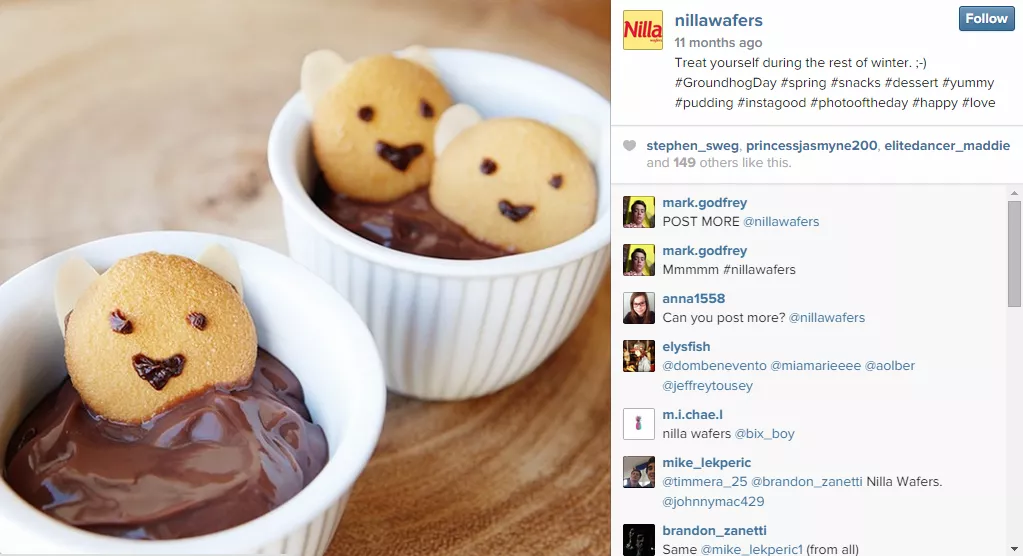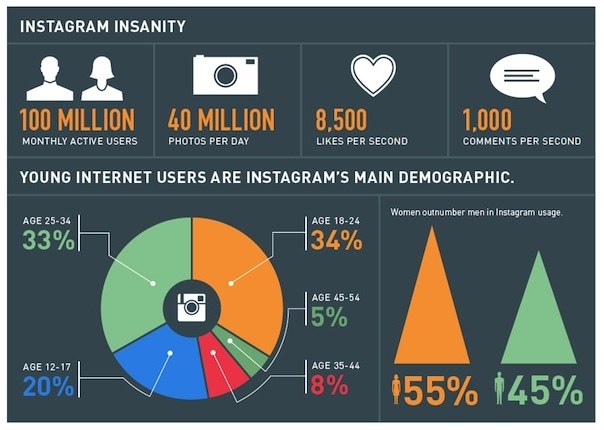Following the footsteps of Facebook, Twitter and Pinterest, Instagram has finally stepped into the business arena as a lead gen powerhouse. Which is not surprising considering that all three platforms before it followed the same path:
- businesses didn’t take them seriously;
- businesses began to experiment and see results;
- every business started to use the platform to generate leads.
While quality is always the dominating factor in determining whether social media works for your business, oversaturation and payment-based views make Facebook difficult for some businesses to jump in without some serious rep-building. Similarly, Twitter’s myriad tweets can get out of hand and Pinterest doesn’t have the grace of other social media platforms to be anything more than a trust building exercise. But Instagram is a newcomer, quickly on the rise, and the businesses that have taken full advantage of it are seeing it well worth their time. What was once thought of as just pretty pictures has turned out to be a powerful storytelling platform.
Why Instagram?
So your business is migrating over to Instagram and you’re wondering if all this will be worth it. Here’s a few reasons why you shouldn’t think twice before jumping neck-deep into the Instagram pool:
- Although Instagram has hit 300 million active users, not all businesses are taking advantage of its lead gen and brand cred potential. Many are simply using it as a way to spam their ecommerce promotions. This gives you a relatively open field to play in.
- There is no paid ad system, such as on Facebook. This means it all comes down to three factors: The quality of your posts, how well you convey your message and the hashtags you use. The more effort you put into your posts, the more heads you’ll turn.
- Since there is no way to hyperlink Instagram pictures, businesses are forced to rely on producing content engaging and clever enough to influence users to get out of the app and actually go on their browser to find out more. This creates a more organic transition from curiosity to interest to sale, and narrows the people who really want to buy.
- Instagram is stupidly simple. Yeah, Pinterest has pictures, but nothing gets simpler than posting a photo or video, a brief description and some hashtags. The less clutter a social media platform has, the easier it is for the user to interact with the brand and make purchasing decisions, without getting distracted by a bunch of other factors.
- There is serious creative potential. Just like the haiku-like limitations of Twitter force users to convey as much as they can in 140 characters, Instagram does this visually. And since direct advertising won’t work, and no links can attached to the image or the post description, it puts businesses in a headspace where they must create captivating content.
What if my niche doesn’t work on Instagram?
It’s easy to notice the immediate benefit of migrating over to Instagram if you have a business that relies heavily on visuals, such as an ecommerce shop, a food manufacturer or a design firm. But what if you’re a carpet cleaner, or dentist, or anything that doesn’t necessarily rely on pretty pictures to show off its products and services? Here’s a list of pictures you can post on Instagram to help your business gain attention, no matter what niche you’re in:
- A few employee photos, tastefully done, can work really well to humanize your business.
- Follower giveaways, contests, coupons and any other interactive, value-giving content helps stave off a static brand image.
- Mini inforgraphics and colorful metrics are a great way to display cold data in a warmer light.
- Give a sneak peek at what’s to come in the business with allusive images/imagery.
- Show off your office (if it’s not too generic-looking).
- Is the boss going on vacation? Is the team going to a trade show? These are great opportunities for some solid posts.
- No one said the images had to be directly related to business. Attention grabbers like cute animals, food porn, striking scenes, etc. can be used for any business, as long something in the photo or in the description is contextually relevant to your niche.
OK, I’m in. Now what?
You’re in. You want to do it right. Here’s what to keep in mind when posting your business pics:
- This is not, and never will be, a platform to spam promotions and offers. Emphasis is placed heavily on unique, clever, fun visuals, as well as relevant accompanying copy. Pressure is placed on businesses to deliver interesting visual content on a periodic basis. Spamming deals and offers will be the quickest way to lose any following you gain.
- Hashtags do NOT have to be subtle. They are the only way for your target demo to find your content. They can be placed in comments, in the middle of descriptions or at the end of descriptions. As long as they relate to your industry, feel free to copy paste large blocks of hashtags into every post you make until you have enough followers where it becomes unnecessary to over-hashtag.
- The Instagram feed, while not as cluttered as the Facebook news feed, can still be a packed place to work in. You want people to know that it’s your business posting those images they keep liking, so feel free to brand everything you post, albeit not too overtly.
- Keep the content fresh, and keep it consistent. It’s easy to forget you have someone on your feed if they only post once a week.
- Don’t eliminate promotions and deals - in the end, the goal is to sell. Whip out the offers when the time is right. Seasonal and holiday promotions are obvious. Others are more subtle (it’s the weekend, or it’s a sunny day, you got your 100th sale, etc.). Just make the promotions and offers as visually appealing as your regular content, and you’ll be OK.
Well, if everyone’s going to be doing it soon, what’s the point?
To do it better. Just like in your vertical market, you’re aiming to be the best at what you do. If that means posting the best pictures on Instagram for your niche, then that’s your goal. There’s a reason why certain boutiques stand out amongst countless clones and towering giants: it’s because they try to do it better than anyone else.
Related Articles
How PPC, SEO and Link Building Shape Your Visibility in AI Search
Explore how PPC, SEO, and link building contribute to your brand’s visibility in AI search results. Learn how these strategies intersect and why they’re essential for success in the evolving digital landscape.
How Generative AI Rewrites Your SEO Funnel — and What to Rebuild First
Discover how generative AI is transforming the traditional SEO funnel from "search-click-buy" to new customer journeys. Learn which parts of your marketing funnel to rebuild first for AI-driven search behavior.
Fashion Marketing Case Study: Scaling Premium Women’s Apparel and Accessories Brands on Marketplaces
Discover marketplace success stories in this fashion marketing case study prepared by Netpeak US.





